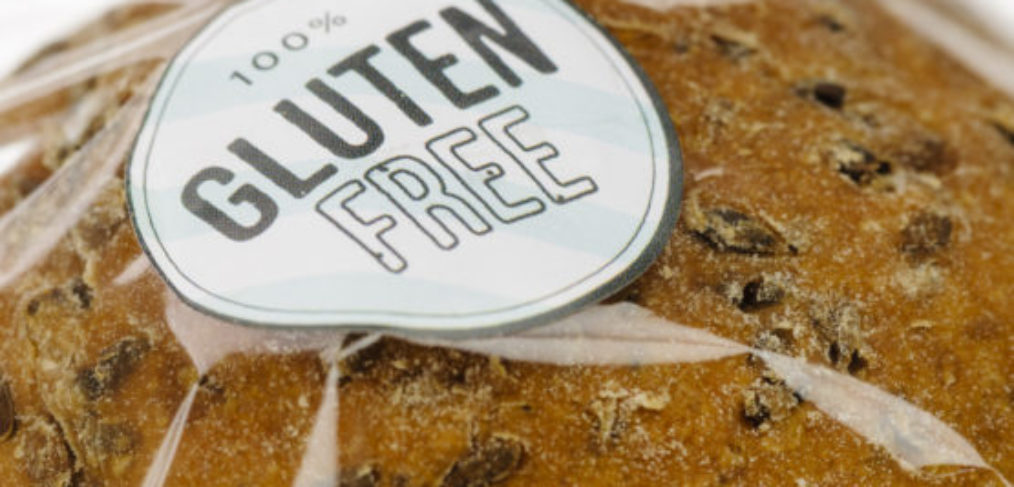November 7, 2019
Is Gluten-Free Really Gluten-Free?

Do you follow a gluten-free diet?
If so, you’re not alone.
3.1 million people across the United States follow a gluten-free diet and 72% of them are classified as “PWAGs” – people without celiac disease avoiding gluten (1).
But what does that gluten-free diet actually look like and just how healthy is it?
One way to approach a gluten-free diet would be to simply eat in a manner which is based primarily on abundant, local, in season produce (mostly veggies with some perhaps some fruit here and there… or not), ample sources of naturally occurring fats and moderate portions of mindfully sourced proteins.
In other words, if you could pick it and eat it, gather it and eat it or catch it and eat it, it’s not going to have gluten in it.
Another way, of course, is to work backward from what might be seen as a more convenient way to eat and to work backward from a standard American diet, removing manufactured goods that contain gluten and replacing them with manufactured goods which do not.
Unfortunately, simply trying to avoid gluten by eating foods labeled as gluten-free is not necessarily the healthiest way to go… nor is it even reliable.
First off, gluten-free foods, including breads, pretzels, and pastas, replicas of normally glutinous foods, often contained more saturated fats, sugar, and salt than the regular items as well as a lower amount of fiber and proteins (2).
Next, and perhaps more alarming, in a recent study, in which the the FDA looked at over 5000 foods that were labeled ‘gluten-free,” 32% had significant amounts of gluten in them with pizza and pasta were the worst offenders (3).
Not only is this extremely harmful for the consumer who’s chosen any given product labeled as gluten-free who happens to have celiac disease, it’s problematic for the over 90% of Americans who have an inflammatory related health concern they’re trying to address.
A diet consisting of packaged items labeled as gluten-free is far from the answer to anyone’s health issues or to address their high performance lifestyle goals.
So where does this confusion stem from?
Simple: it’s the bottom dollar.
The global gluten-free food market was valued at $4.48 Billion in 2018 and is predicted to reach $6.47 Billion in 2023 (4).
You can bet that the majority of gluten-free foods in this category are not those which are described in the first scenario above in which one chooses to eat from what grows, swims and runs locally in the area in which they live.
In other words, there’s not a lot of profit to be made in broccoli, berries and local farm-free eggs in their natural state.
But pick them, dry them, powder them, add refined sugars and salts, place them in a package that will be portable and shelf stable for a year and voila! You’ve got yourself the beginnings of a potentially profitable commodity.
The mere fact that the FDA’s gluten-free seal of approval has been shown to be erroneous to the tune of over one-third should be a message to consumers that giving them all their trust and faith may not necessarily be the best bet and accordingly, relying on the tagline of FDA approved may not be all it’s chalked up to be.
So what’s a well intentioned consumer to do, in order to sift through all the confusion of labeling?
That’s easy: minimize or even eliminate the amount of packaged food items one consumes. If it doesn’t have a label, it’s not going to have gluten. (Have you ever seen a nutrition label on a bunch of kale, a head of cauliflower or an apple?)
Does this mean we’ve got to go out of our way and never eat any of these items?
Not at all.
If you’re like me and don’t have Celiac disease, but know definitively that gluten is a bad idea, always, eating the occasional item labeled gluten free may not be as high risk and may potentially even be an enjoyable treat from time to time.
On my birthday, my husband and I shared a lovely flourless chocolate torte at our local favorite restaurant, without consequence.
But simply replacing all the gluten-containing goods in your home, your office and in your day to day regime with gluten-free versions of the very same items is not likely to create a foundation for creating optimal health.
Doing so would only result in a still highly refined, low nutrient dense eating plan which may very likely still keep that inflammation going strong.
Focusing on a real, uncompromised food diet is the answer, once again.
What to do if you accidentally get ‘glutened’?
Microbiome labs has recently launched their new WheatRescue which is meant to help break down any possible gluten consumption.
Keep it for in a pinch, but err on the side of caution and just stick with eating things that are actually food and staying way from things that are not.
(1) https://www.forbes.com/sites/niallmccarthy/2017/01/17/the-number-of-americans-going-gluten-free-
(2) https://www.thedailymeal.com/healthy-eating/gluten-free-foods-expensive-less-healthy-study/012218





